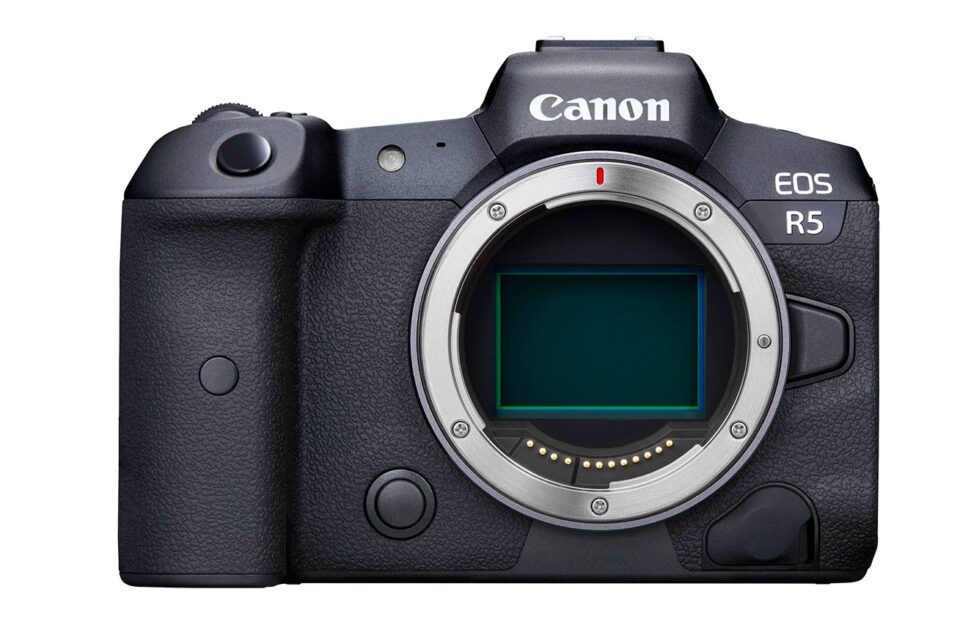Recommended Canon EOS R5 Settings
الإعدادات الموصى بها لكاميرة كانون اي او اس
Canon released two versions of its high-end mirrorless camera, the EOS R5 and R6. While the 20-megapixel R6 is aimed to be a general-purpose tool, the Canon EOS R5 is much more specialized thanks to its high-resolution 45-megapixel sensor that is capable of shooting 8K video. As a result, it is a fairly sophisticated camera with a complex menu system and controls. In this article, I am going to share my recommended camera settings for the Camon EOS R5, which will hopefully make it easy for our readers to get started with this camera.

It is important to point out that while the settings below work great for my needs, there are other ways to set up and configure the camera.
Before we delve into the camera menu, let’s first go over all the exterior controls. The Canon EOS R5 has many menu options, but there are some things that you can only do via specific buttons and controls.
أصدرت شركة كانون نسختين من الكاميرا المتطورة بدون مرآة، EOS R5 وR6. في حين أن كاميرا R6 بدقة 20 ميجابكسل تهدف إلى أن تكون أداة للأغراض العامة، فإن كاميرا EOS R5 من Canon أكثر تخصصًا بفضل مستشعرها عالي الدقة بدقة 45 ميجابكسل القادر على تصوير فيديو بدقة 8K. ونتيجة لذلك، فهي كاميرا متطورة إلى حد ما مع نظام قائمة وعناصر تحكم معقدة. في هذه المقالة، سأشارك إعدادات الكاميرا الموصى بها لكاميرا Camon EOS R5، والتي نأمل أن تسهل على قرائنا البدء باستخدام هذه الكاميرا.

من المهم الإشارة إلى أنه على الرغم من أن الإعدادات أدناه تلبي احتياجاتي بشكل جيد، إلا أن هناك طرقًا أخرى لإعداد الكاميرا وتكوينها.
قبل أن نتعمق في قائمة الكاميرا، دعونا نتعرف أولاً على جميع عناصر التحكم الخارجية. تحتوي كاميرا Canon EOS R5 على العديد من خيارات القائمة، ولكن هناك بعض الأشياء التي لا يمكنك القيام بها إلا من خلال أزرار وعناصر تحكم محددة.
الإعدادات الموصى بها لكاميرة كانون اي او اس
Canon released two versions of its high-end mirrorless camera, the EOS R5 and R6. While the 20-megapixel R6 is aimed to be a general-purpose tool, the Canon EOS R5 is much more specialized thanks to its high-resolution 45-megapixel sensor that is capable of shooting 8K video. As a result, it is a fairly sophisticated camera with a complex menu system and controls. In this article, I am going to share my recommended camera settings for the Camon EOS R5, which will hopefully make it easy for our readers to get started with this camera.

It is important to point out that while the settings below work great for my needs, there are other ways to set up and configure the camera.
Before we delve into the camera menu, let’s first go over all the exterior controls. The Canon EOS R5 has many menu options, but there are some things that you can only do via specific buttons and controls.
أصدرت شركة كانون نسختين من الكاميرا المتطورة بدون مرآة، EOS R5 وR6. في حين أن كاميرا R6 بدقة 20 ميجابكسل تهدف إلى أن تكون أداة للأغراض العامة، فإن كاميرا EOS R5 من Canon أكثر تخصصًا بفضل مستشعرها عالي الدقة بدقة 45 ميجابكسل القادر على تصوير فيديو بدقة 8K. ونتيجة لذلك، فهي كاميرا متطورة إلى حد ما مع نظام قائمة وعناصر تحكم معقدة. في هذه المقالة، سأشارك إعدادات الكاميرا الموصى بها لكاميرا Camon EOS R5، والتي نأمل أن تسهل على قرائنا البدء باستخدام هذه الكاميرا.

من المهم الإشارة إلى أنه على الرغم من أن الإعدادات أدناه تلبي احتياجاتي بشكل جيد، إلا أن هناك طرقًا أخرى لإعداد الكاميرا وتكوينها.
قبل أن نتعمق في قائمة الكاميرا، دعونا نتعرف أولاً على جميع عناصر التحكم الخارجية. تحتوي كاميرا Canon EOS R5 على العديد من خيارات القائمة، ولكن هناك بعض الأشياء التي لا يمكنك القيام بها إلا من خلال أزرار وعناصر تحكم محددة.

تعليق